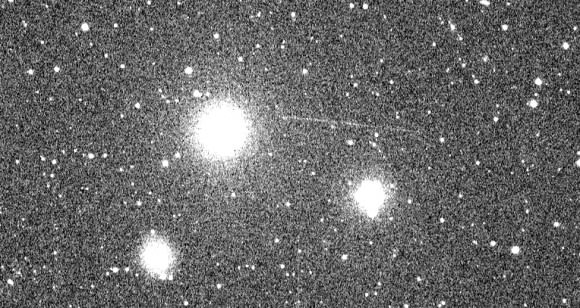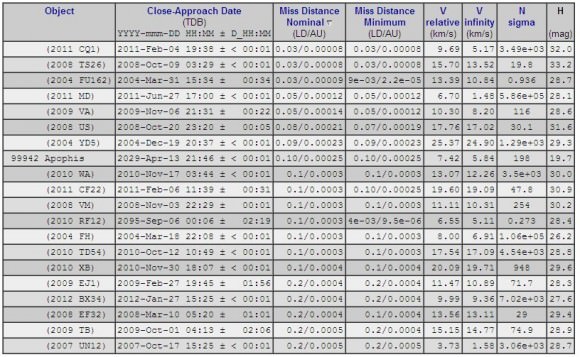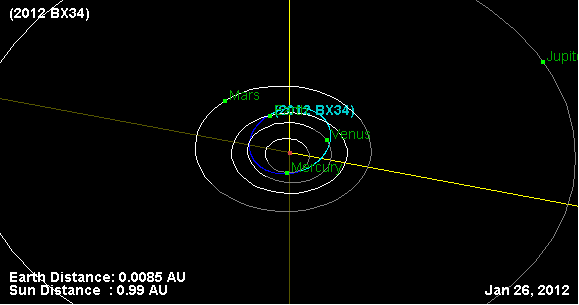[/caption]
Small asteroid 2012 BX34 skimmed past Earth today, January 27, 2012, with closest approach at about 15:25 UT, and it passed only about 59,044 km (36,750 miles) or about ~0.2 lunar distance (or 0.0004 AU) above the Earth’s surface. It was discovered just a few days ago by the Catalina Sky Survey in Arizona.
Above is an animation created by image from Ernesto Guido, Giovanni Sostero & Nick Howes from the Remanzacco Observatory in Italy. However, they took this series of images remotely from the iTelescope (formerly called GRAS), near Mayhill, New Mexico, using a 0.10-m f/5 reflector + CCD.
“According to its absolute magnitude (H=27.6) this asteroid has an estimated diameter of roughly 8-18 meters, so it is very small,” the team said on their website. “At the moment of our images from New Mexico on January 27, 11:04UT, 2012 BX34 was moving at about ~318.86 “/min and its magnitude was ~15. At the moment of its close approach around 15UT of today, 2012 BX34 will be bright as magnitude ~13.8 and moving at ~1810 “/min.”
Below is a single 120-seconds exposure showing the object as a ~11-arcminutes trail (due to its fast speed). Also below is a video from Peter Lake using his telescope in New Mexico remotely from Melbourne Australia, who took a series of 11 images just 6 hours before its closest approach.

See this link to see an image taken by legendary comet and asteroid hunter Rob McNaught, using a telescope in Sliding Spring, Australia. McNaught’s data was used by the Goldstone Deep Space Communications Complex to obtain radar imagery to determine BX34’s shape, size and orbital parameters. At this point, there are various estimates of the asteroid’s size, which will be refined from all the data gathered by the various telescopes. But astronomers from JPL’s Asteroid Watch said the space rock was small enough that it wouldn’t have survived a trip through Earth’s atmosphere if it had been on a collision course with our planet.
The team from the Remanzacco Observatory have a great table on their website, the the top 20 closest approaches by NEOs (Near-Earth Objects) sorted by nominal distance. The table was computed on the NASA/Neo-JPL website.
Thanks to all the astronomers for sharing their images with Universe Today. We’ll add more as they become available.



